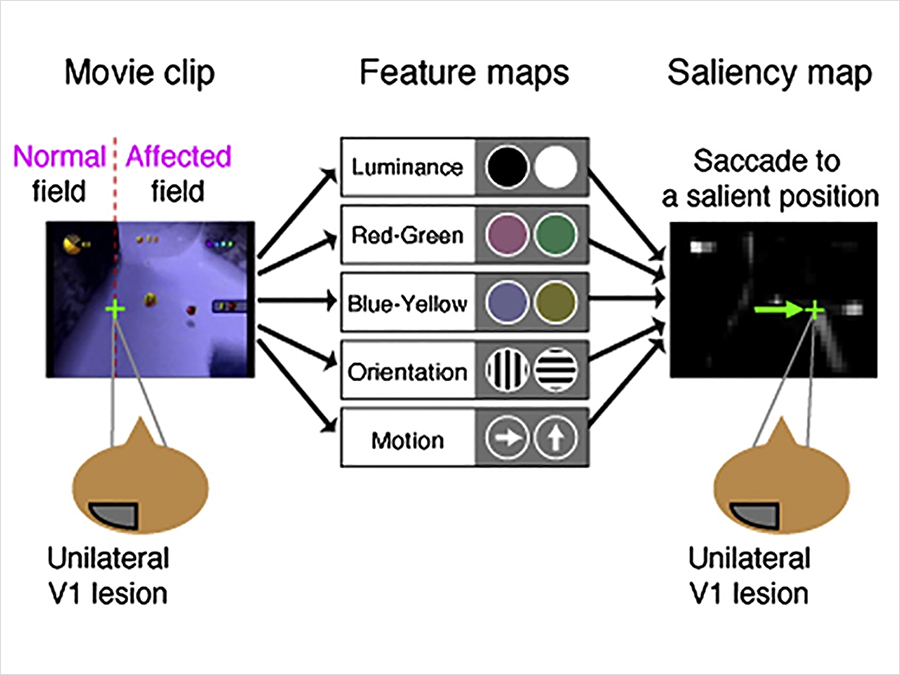Review: Neural Mechanism of Blindsight in a Macaque Model
A review paper by ASHBi Vice Director/PI Dr Tadashi Isa was published online in Neuroscience on June 19, 2021.
Abstract
Some patients with damage to the primary visual cortex (V1) exhibit visuomotor ability, despite loss of visual awareness, a phenomenon termed ‘‘blindsight”. We review a series of studies conducted mainly in our laboratory on macaque monkeys with unilateral V1 lesioning to reveal the neural pathways underlying visuomotor transformation and the cognitive capabilities retained in blindsight. After lesioning, it takes several weeks for the recovery of visually guided saccades toward the lesion-affected visual field. In addition to the lateral geniculate nucleus, the pathway from the superior colliculus to the pulvinar participates in visuomotor processing in blindsight. At the cortical level, bilateral lateral intraparietal regions become critically involved in the saccade control. These results suggest that the visual circuits experience drastic changes while the monkey acquires blindsight. In these animals, analysis based on signal detection theory adapted to behavior in the ‘‘Yes–No” task indicates reduced sensitivity to visual targets, suggesting that visual awareness is impaired. Saccades become less accurate, decisions become less deliberate, and some forms of bottom-up attention are impaired. However, a variety of cognitive functions are retained such as saliency detection during free viewing, top–down attention, short-term spatial memory, and associative learning. These observations indicate that blindsight is not a low-level sensory-motor response, but the residual visual inputs can access these cognitive capabilities. Based on these results we suggest that the macaque model of blindsight replicates type II blindsight patients who experience some ‘‘feeling” of objects, which guides cognitive capabilities that we naı¨vely think are not possible without phenomenal consciousness.
Paper Information
Tadashi Isa and Masatoshi Yoshida, “Neural Mechanism of Blindsight in a Macaque Model” (2021), Neuroscience, DOI: https://doi.org/10.1016/j.neuroscience.2021.06.022



